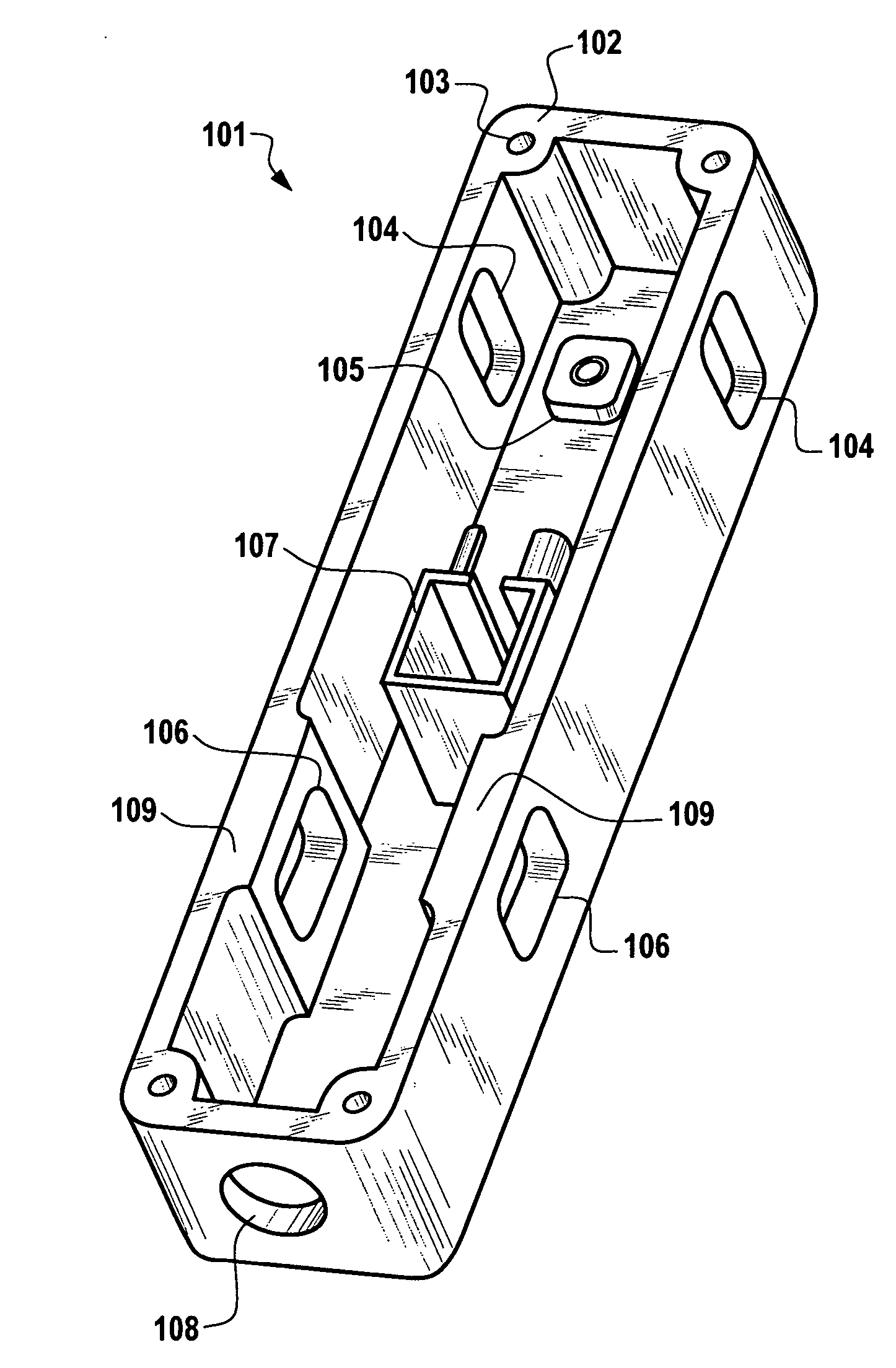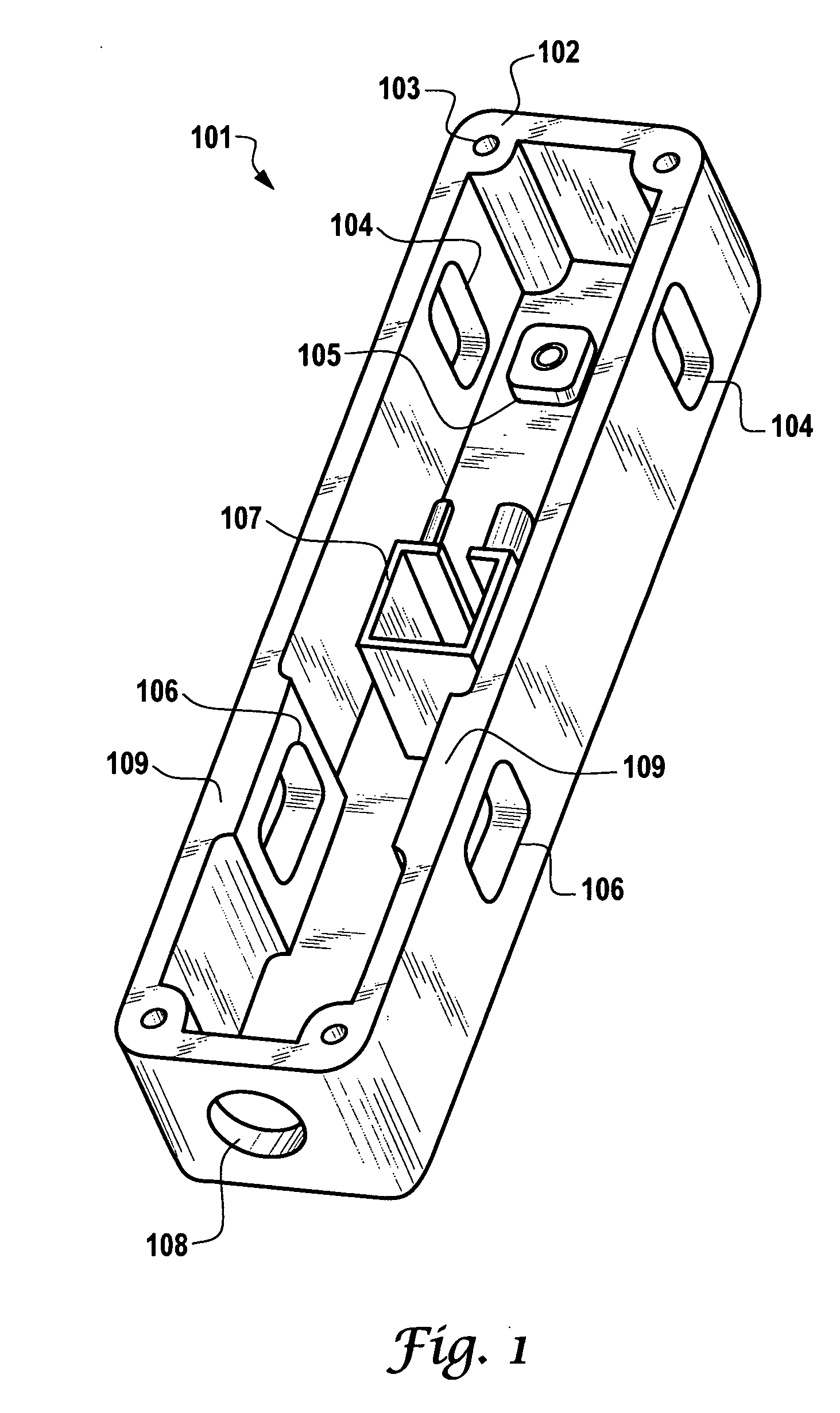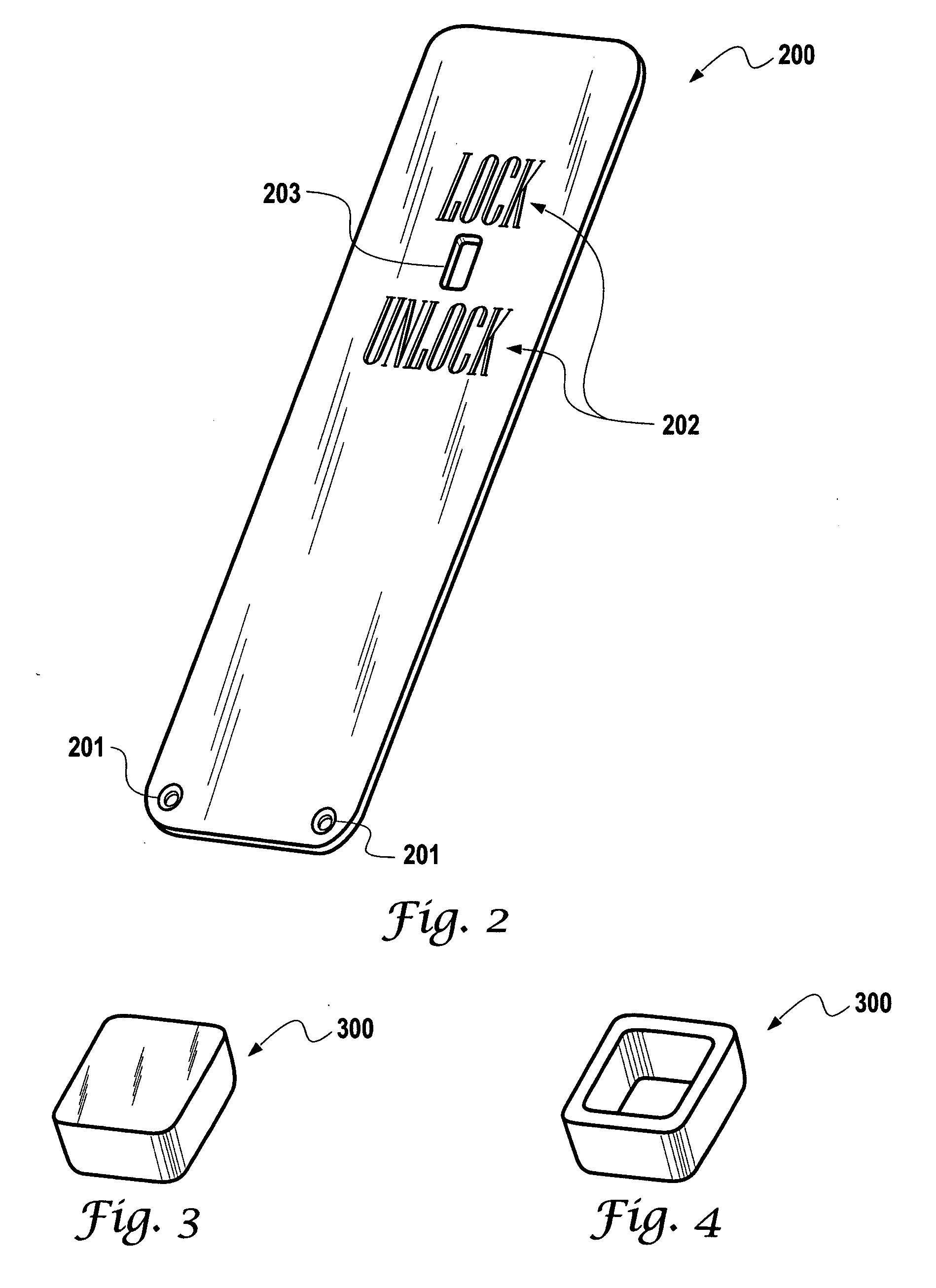Elevator door interlock
- Summary
- Abstract
- Description
- Claims
- Application Information
AI Technical Summary
Benefits of technology
Problems solved by technology
Method used
Image
Examples
Embodiment Construction
[0033] In accordance with a preferred embodiment, FIG. 1 illustrates a cast housing 101 that can be formed as a single piece that incorporates mounting points and other elements. One of the advantages of the cast housing 101 is that it can possess thickened areas such as thickened areas for bolts 102 or thickened areas for other mountings 109. The thickened area for bolts 102 can be simply a place where a bolt hole 103 is placed and threaded so that a bolt can be screwed into that location.
[0034] Bolts are used to fasten things together. Single bolt holes and bolt hole patterns are examples of mount points. In general, a mount point is a place where two or more components of an assembly are joined together. The cast housing 101 can also have a locking fixture window 104 that is an opening where a locking fixture, such as the cam actuator illustrated later, can enter. The cast housing 101 can have a cam axle mount 105, which is a thickened area with a hole meant to hold an axle on w...
PUM
 Login to View More
Login to View More Abstract
Description
Claims
Application Information
 Login to View More
Login to View More - R&D
- Intellectual Property
- Life Sciences
- Materials
- Tech Scout
- Unparalleled Data Quality
- Higher Quality Content
- 60% Fewer Hallucinations
Browse by: Latest US Patents, China's latest patents, Technical Efficacy Thesaurus, Application Domain, Technology Topic, Popular Technical Reports.
© 2025 PatSnap. All rights reserved.Legal|Privacy policy|Modern Slavery Act Transparency Statement|Sitemap|About US| Contact US: help@patsnap.com



